Abstract
Each of the three major bile acids of man was tested for its influence on electrolyte and water absorption in the human colon. Transport from isotonic solutions, with or without added bile acids, was compared in 35 studies on 20 healthy volunteers by colonic perfusions under steady-state conditions. Electrolytes and water were always absorbed from control solutions, but dihydroxy bile acid solutions induced continuous secretion or inhibition of sodium, potassium, and water absorption, which was reversible. Deoxycholic acid caused consistent secretion at 3 mm concentrations, whereas chenodeoxycholic acid did not induce secretion until the concentration was 5 mm. The trihydroxy bile acid (cholic acid) produced no significant change in absorption at 10 mm. Inhibition of absorption was also induced by mixtures of the glycine or taurine conjugated bile acids. Secretion of sodium and chloride, induced by bile acid perfusion, was linearly correlated with secretion of water; potassium secretion was relatively constant regardless of the volume of secretion. These results establish a striking influence of bile acids on colonic absorptive activity, provide an explanation in part for the diarrhea that frequently accompanies ileal disease or resection, and imply that diarrhea should occur in other disease states that produce elevated concentrations of dihydroxy bile acids in the colonic lumen.
Full text
PDF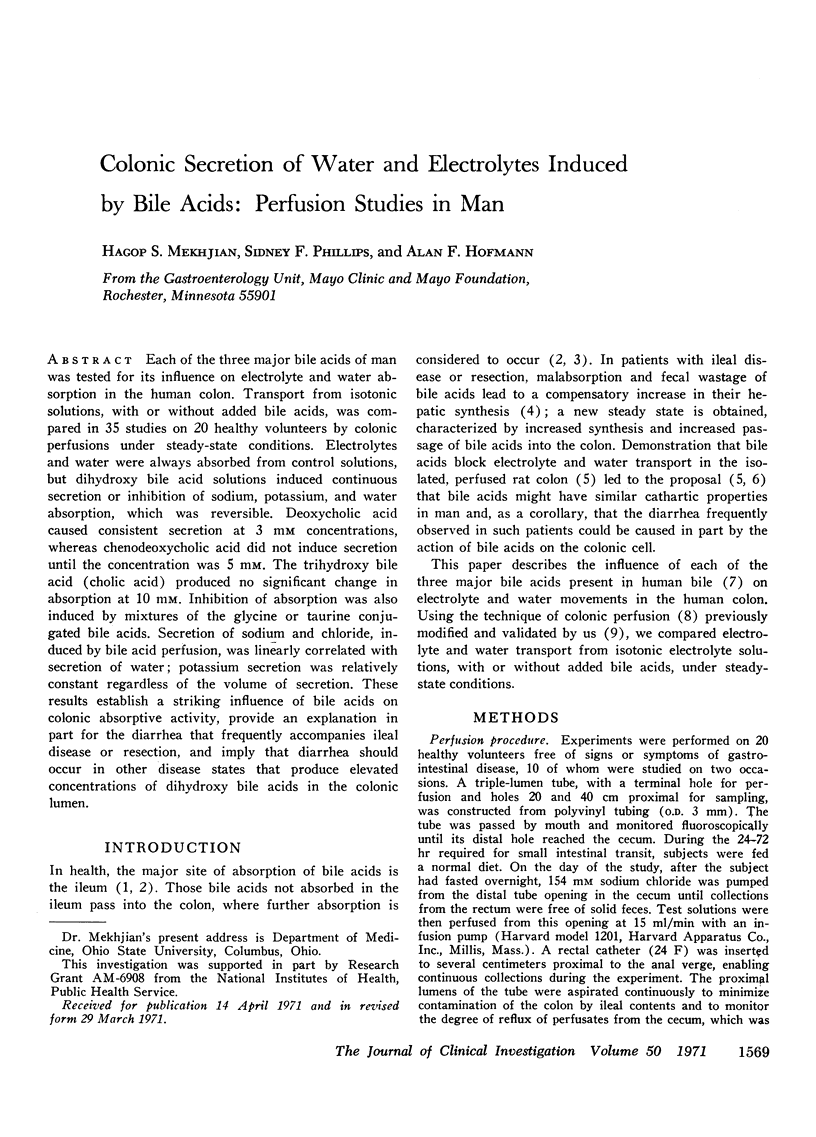
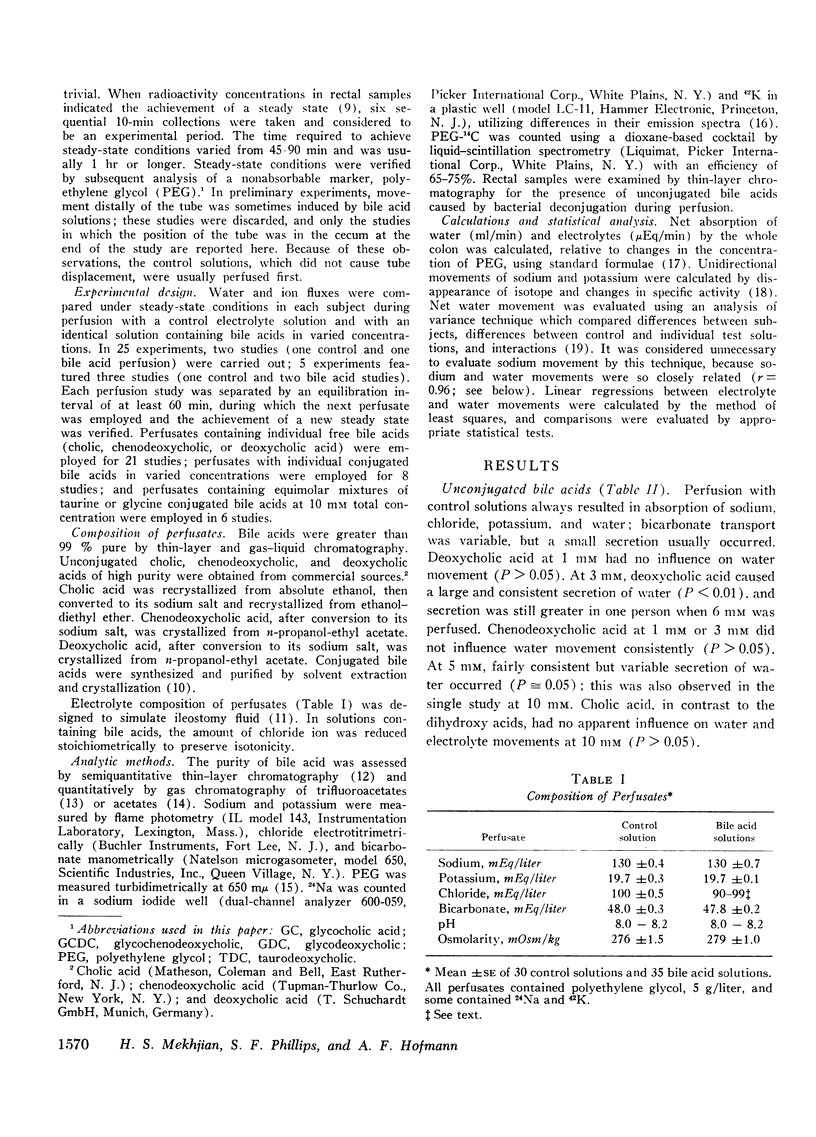
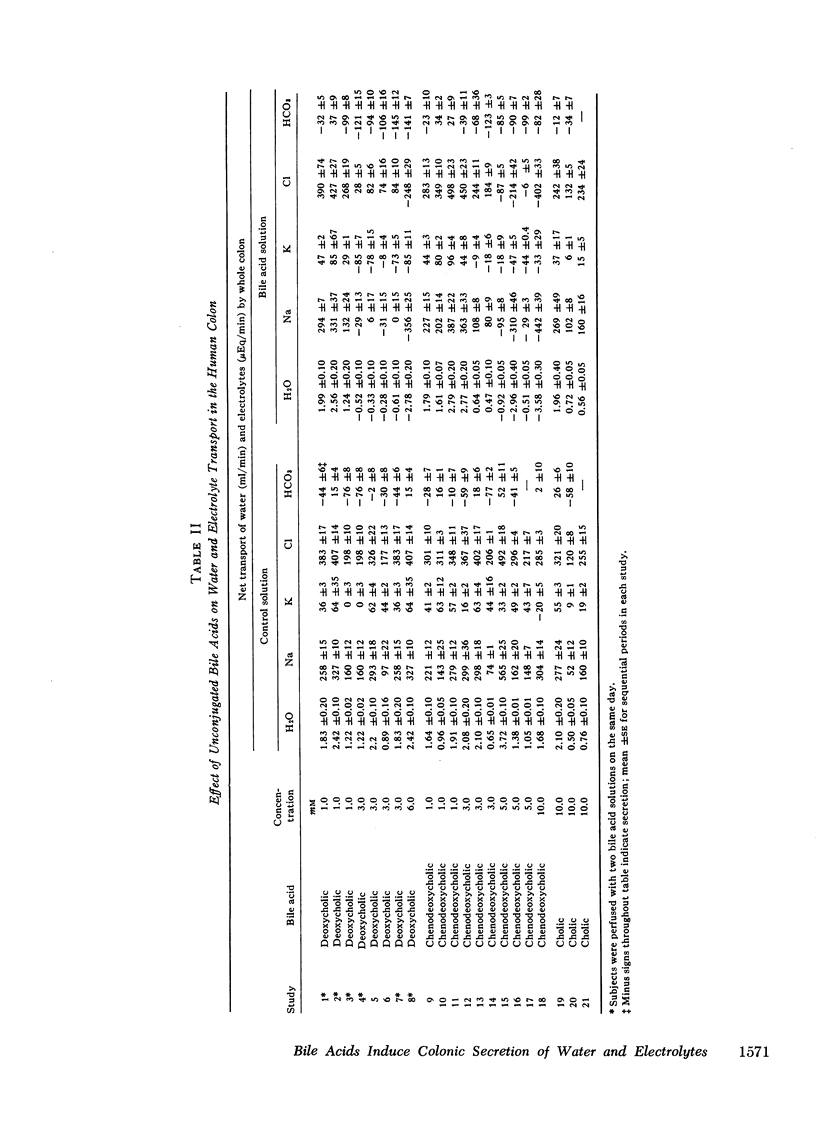
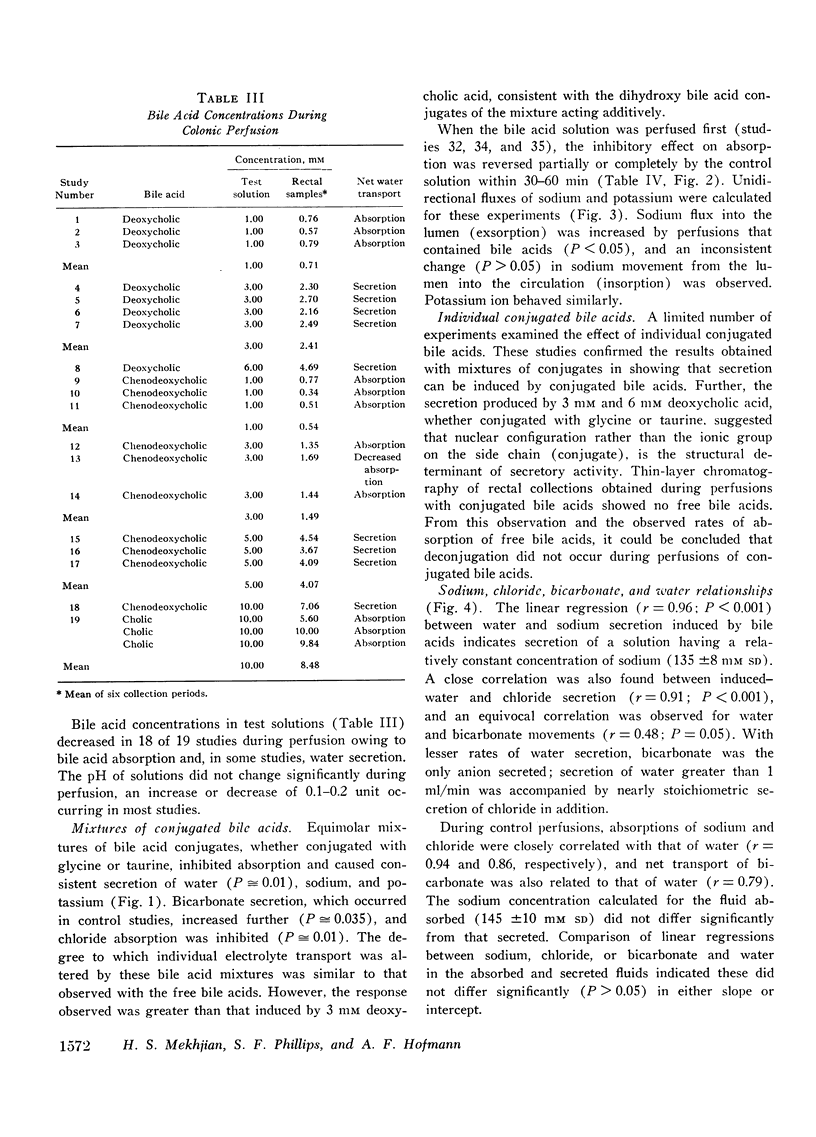
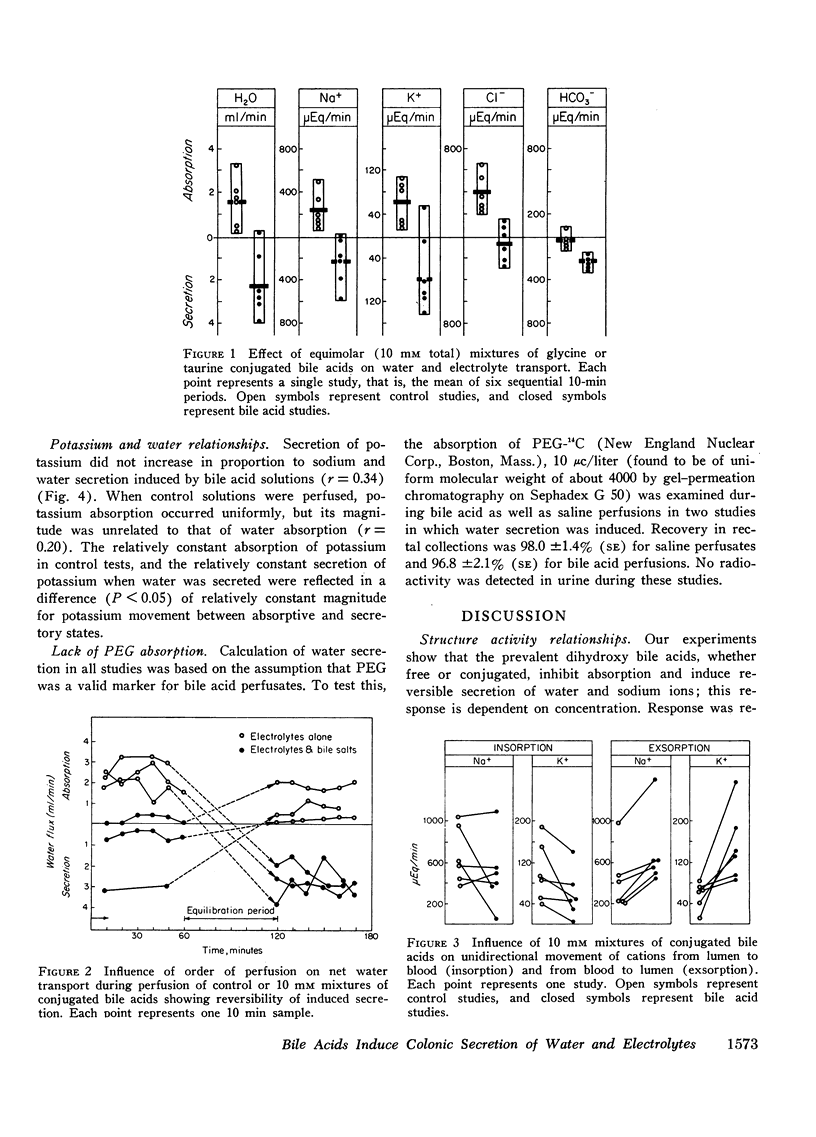
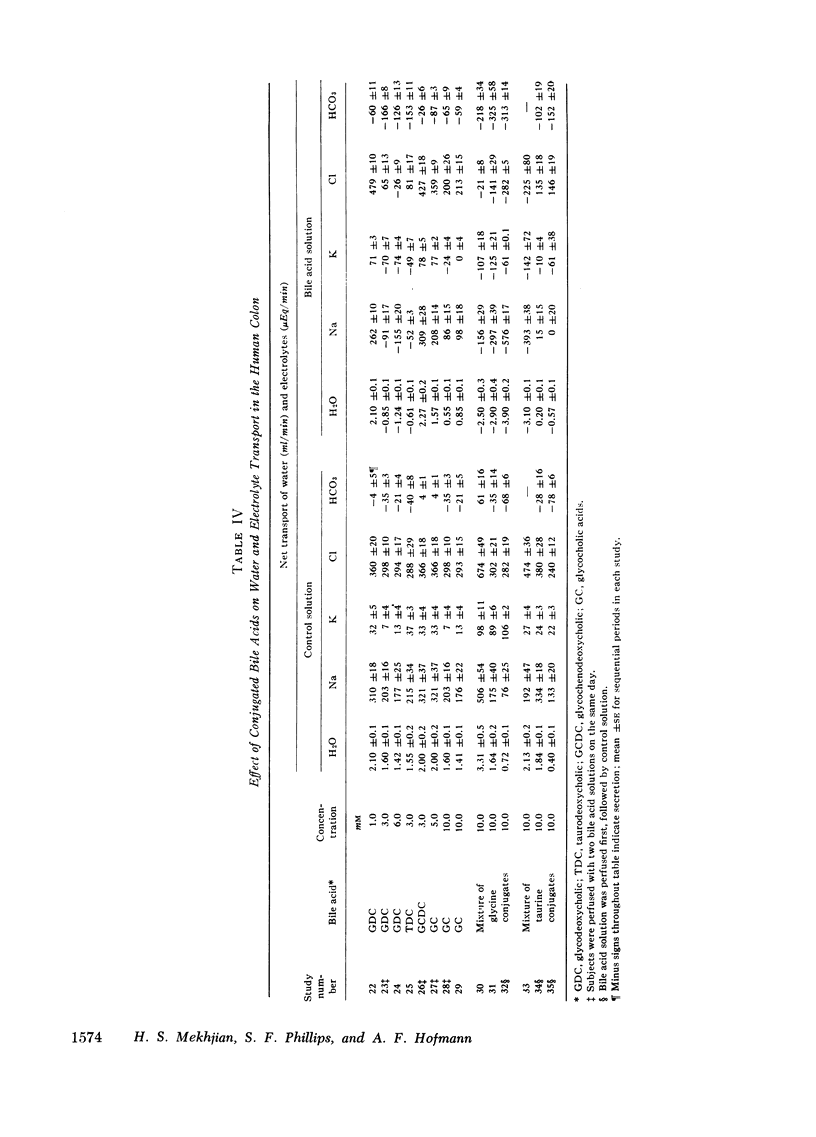
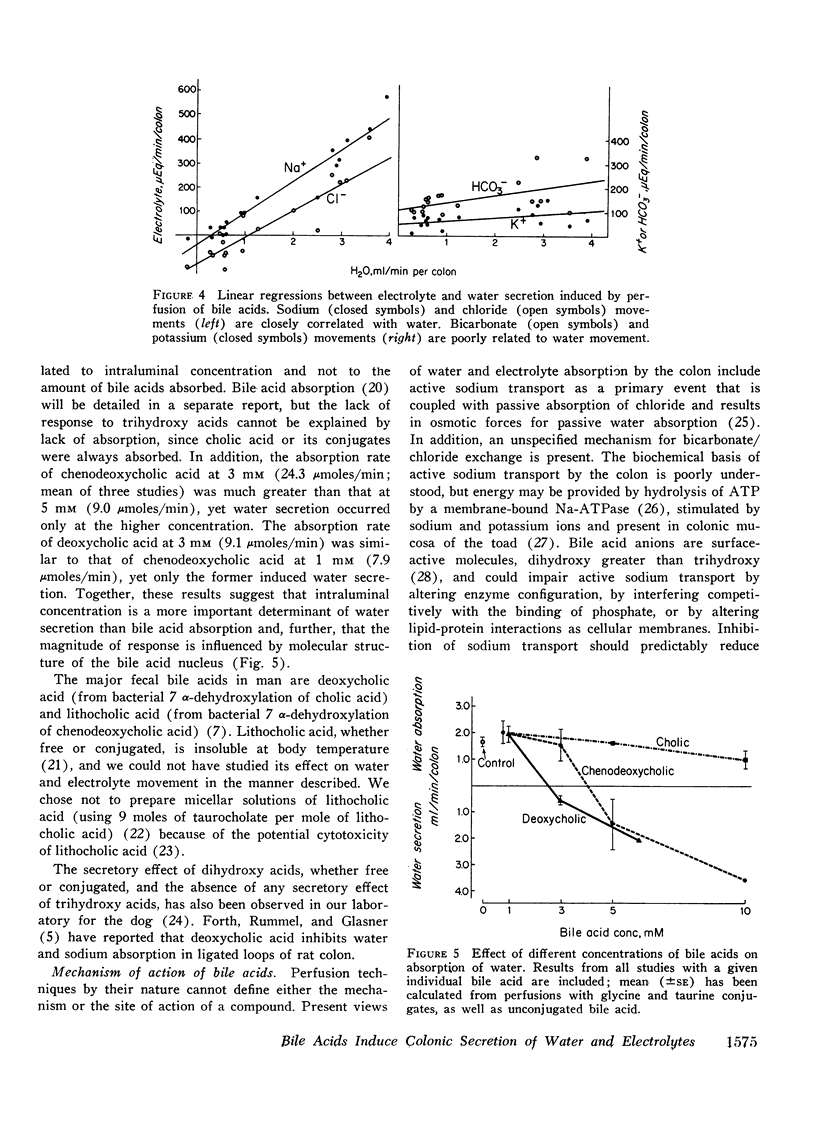
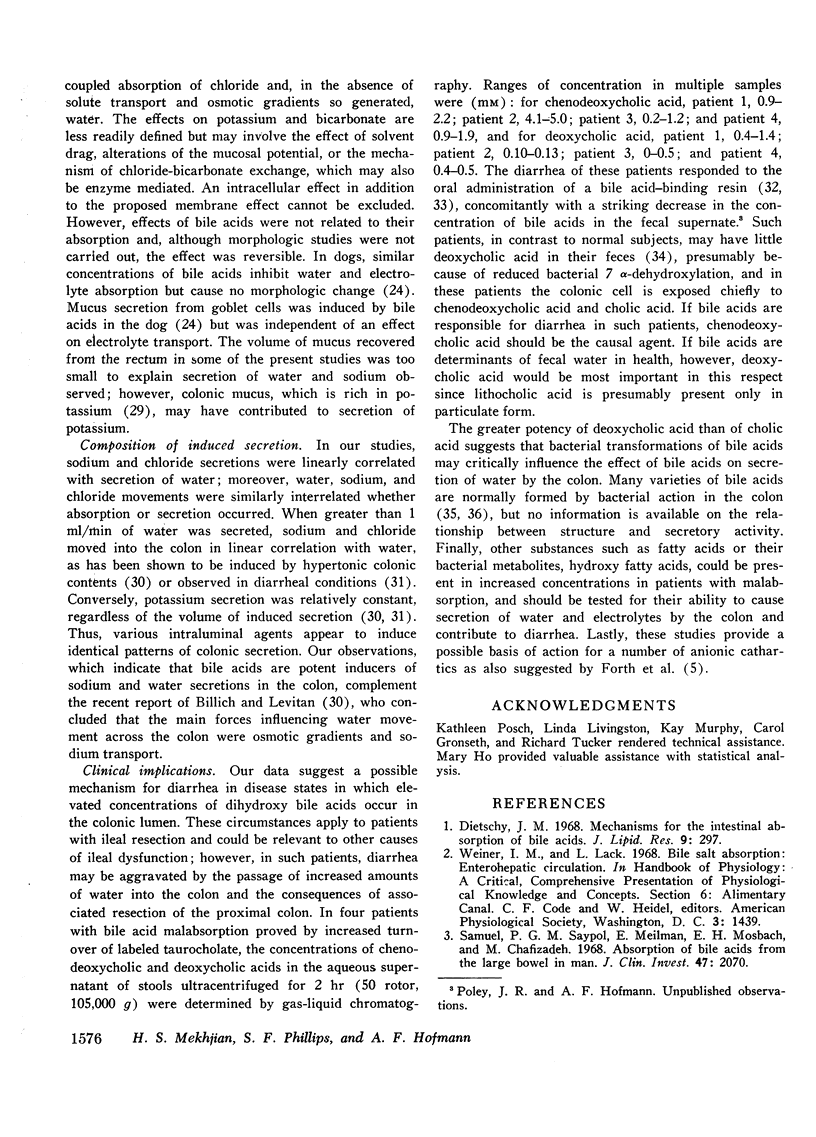
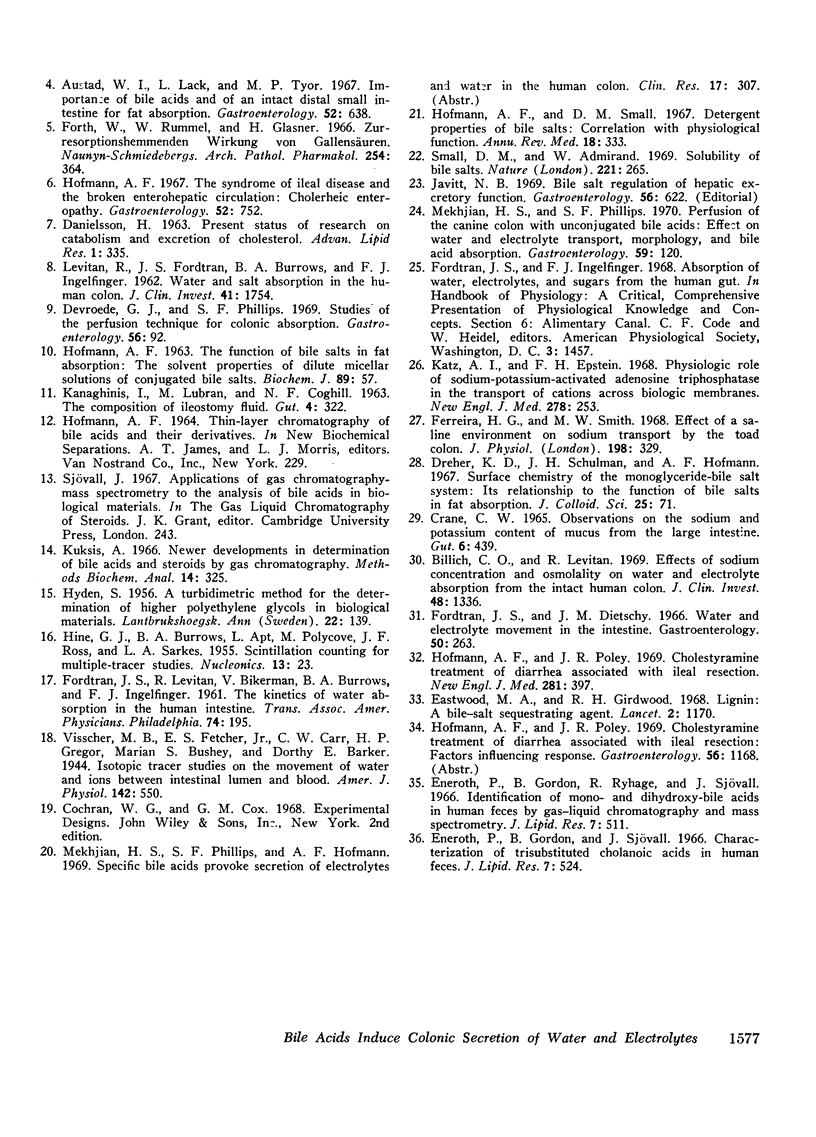
Selected References
These references are in PubMed. This may not be the complete list of references from this article.
- Austad W. I., Lack L., Tyor M. P. Importance of bile acids and of an intact distal small intestine for fat absorption. Gastroenterology. 1967 Apr;52(4):638–646. [PubMed] [Google Scholar]
- Billich C. O., Levitan R. Effects of sodium concentration and osmolality on water and electrolyte absorption form the intact human colon. J Clin Invest. 1969 Jul;48(7):1336–1347. doi: 10.1172/JCI106100. [DOI] [PMC free article] [PubMed] [Google Scholar]
- Crane C. W. Observations on the sodium and potassium content of mucus from the large intestine. Gut. 1965 Oct;6(5):439–443. doi: 10.1136/gut.6.5.439. [DOI] [PMC free article] [PubMed] [Google Scholar]
- DANIELSSON H. PRESENT STATUS OF RESEARCH ON CATABOLISM AND EXCRETION OF CHOLESTEROL. Adv Lipid Res. 1963;1:335–385. doi: 10.1016/b978-1-4831-9937-5.50015-6. [DOI] [PubMed] [Google Scholar]
- Devroede G. J., Phillips S. F. Studies of the perfusion technique for colonic absorption. Gastroenterology. 1969 Jan;56(1):92–100. [PubMed] [Google Scholar]
- Dietschy J. M. Mechanisms for the intestinal absorption of bile acids. J Lipid Res. 1968 May;9(3):297–309. [PubMed] [Google Scholar]
- Eastwood M. A., Girdwood R. H. Lignin: a bile-salt sequestrating agent. Lancet. 1968 Nov 30;2(7579):1170–1172. doi: 10.1016/s0140-6736(68)91643-7. [DOI] [PubMed] [Google Scholar]
- Eneroth P., Gordon B., Ryhage R., Sjövall J. Identification of mono- and dihydroxy bile acids in human feces by gas-liquid chromatography and mass spectrometry. J Lipid Res. 1966 Jul;7(4):511–523. [PubMed] [Google Scholar]
- Eneroth P., Gordon B., Sjövall J. Characterization of trisubstituted cholanoic acids in human feces. J Lipid Res. 1966 Jul;7(4):524–530. [PubMed] [Google Scholar]
- FORDTRAN J. S., LEVITAN R., BIKERMAN V., BURROWS B. A., INGELFINGER F. J. The kinetics of water absorption in the human intestine. Trans Assoc Am Physicians. 1961;74:195–206. [PubMed] [Google Scholar]
- Ferreira H. G., Smith M. W. Effect of a saline environment on sodium transport by the toad colon. J Physiol. 1968 Sep;198(2):329–343. doi: 10.1113/jphysiol.1968.sp008609. [DOI] [PMC free article] [PubMed] [Google Scholar]
- Fordtran J. S., Dietschy J. M. Water and electrolyte movement in the intestine. Gastroenterology. 1966 Feb;50(2):263–285. [PubMed] [Google Scholar]
- Forth W., Rummel W., Glasner H. Zur resorptionshemmenden Wirkung von Gallensäuren. Naunyn Schmiedebergs Arch Pharmakol Exp Pathol. 1966;254(4):364–380. [PubMed] [Google Scholar]
- HOFMANN A. F. THE FUNCTION OF BILE SALTS IN FAT ABSORPTION. THE SOLVENT PROPERTIES OF DILUTE MICELLAR SOLUTIONS OF CONJUGATED BILE SALTS. Biochem J. 1963 Oct;89:57–68. doi: 10.1042/bj0890057. [DOI] [PMC free article] [PubMed] [Google Scholar]
- Hofmann A. F., Poley J. R. Cholestyramine treatment of diarrhea associated with ileal resection. N Engl J Med. 1969 Aug 21;281(8):397–402. doi: 10.1056/NEJM196908212810801. [DOI] [PubMed] [Google Scholar]
- Hofmann A. F., Small D. M. Detergent properties of bile salts: correlation with physiological function. Annu Rev Med. 1967;18:333–376. doi: 10.1146/annurev.me.18.020167.002001. [DOI] [PubMed] [Google Scholar]
- Hofmann A. F. The syndrome of ileal disease and the broken enterohepatic circulation: cholerheic enteropathy. Gastroenterology. 1967 Apr;52(4):752–757. [PubMed] [Google Scholar]
- Javitt N. B. Bile salt regulation of hepatic excretory function. Gastroenterology. 1969 Mar;56(3):622–625. [PubMed] [Google Scholar]
- KANAGHINIS T., LUBRAN M., COGHILL N. F. THE COMPOSITION OF ILEOSTOMY FLUID. Gut. 1963 Dec;4:322–338. doi: 10.1136/gut.4.4.322. [DOI] [PMC free article] [PubMed] [Google Scholar]
- Katz A. I., Epstein F. H. Physiologic role of sodium-potassium-activated adenosine triphosphatase in the transport of cations across biologic membranes. N Engl J Med. 1968 Feb 1;278(5):253–261. doi: 10.1056/NEJM196802012780506. [DOI] [PubMed] [Google Scholar]
- Kuksis A. Newer developments in determination of bile acids and steroids by gas chromatography. Methods Biochem Anal. 1966;14:325–454. doi: 10.1002/9780470110324.ch8. [DOI] [PubMed] [Google Scholar]
- LEVITAN R., FORDTRAN J. S., BURROWS B. A., INGELFINGER F. J. Water and salt absorption in the human colon. J Clin Invest. 1962 Sep;41:1754–1759. doi: 10.1172/JCI104634. [DOI] [PMC free article] [PubMed] [Google Scholar]
- Mekhjian H. S., Phillips S. F. Perfusion of the canine colon with unconjugated bile acids. Effect on water and electrolyte transport, morphology, and bile acid absorption. Gastroenterology. 1970 Jul;59(1):120–129. [PubMed] [Google Scholar]
- Samuel P., Saypoi G. M., Meilman E., Mosbach E. H., Chafizadeh M. Absorption of bile acids from the large bowel in man. J Clin Invest. 1968 Sep;47(9):2070–2078. doi: 10.1172/JCI105892. [DOI] [PMC free article] [PubMed] [Google Scholar]
- Small D. M., Admirand W. Solubility of bile salts. Nature. 1969 Jan 18;221(5177):265–267. doi: 10.1038/221265a0. [DOI] [PubMed] [Google Scholar]


